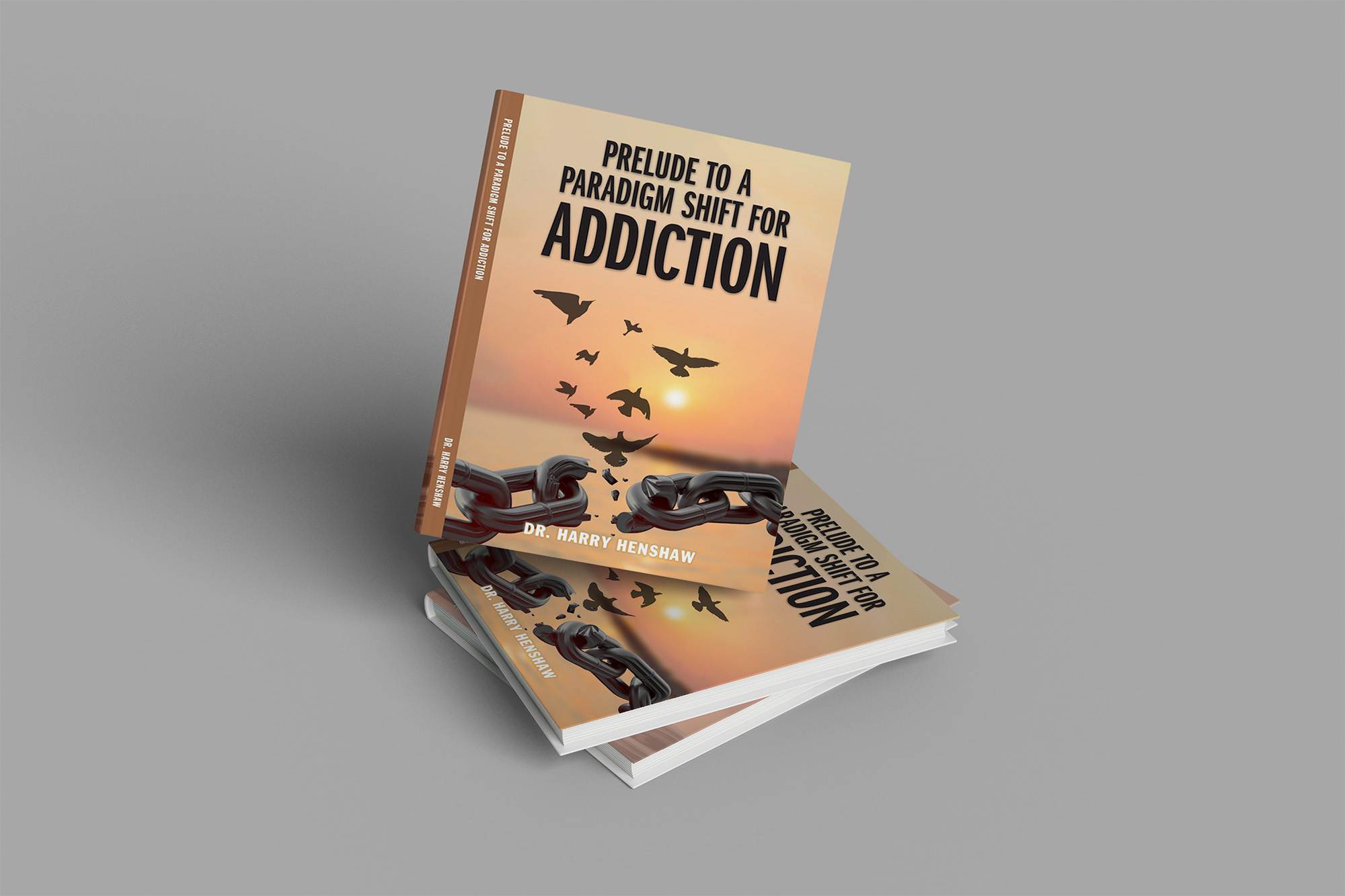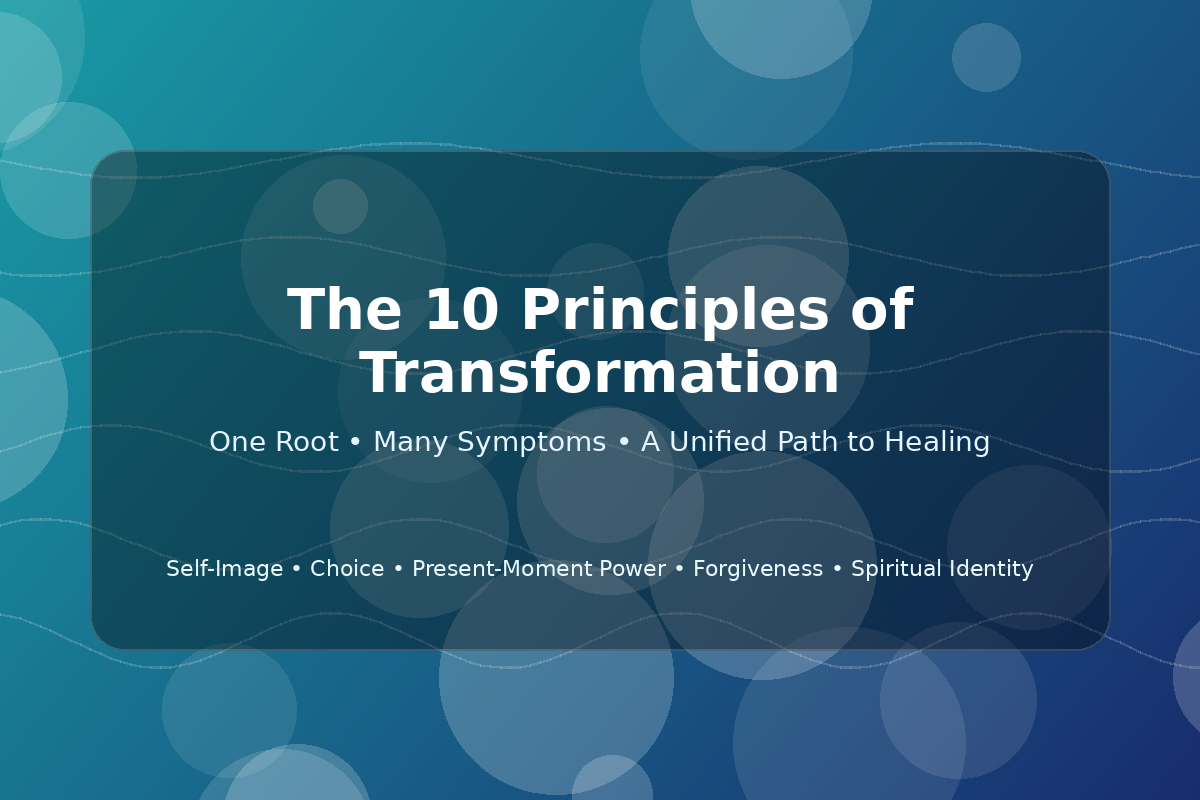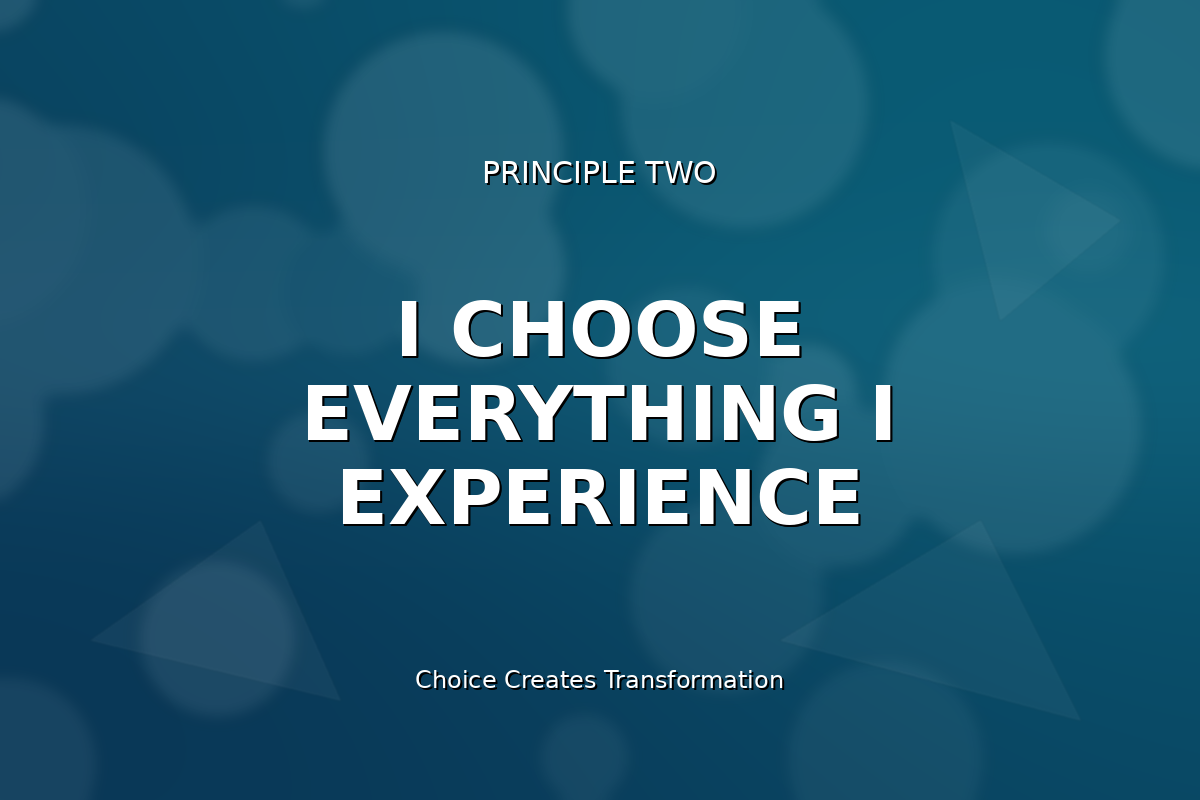Philosophy
Transformation is a therapeutic approach centered on the belief that a person’s thoughts and beliefs have the power to reshape their experiences and ultimately their life. At the heart of this philosophy—whether applied to psychology, psychotherapy, or the treatment of addiction and dependency—is the understanding that the most crucial belief anyone holds, especially those struggling with addiction, is the belief they hold about themselves. This foundational self-perception, what Dr. Maxwell Maltz called the self-image, shapes how individuals view their value and worth as human beings.
The self-image is the core belief that defines who a person—addict, alcoholic, or otherwise—believes they are in the world. It governs every area of life: relationships, career, finances, physical and emotional health, moment-to-moment experience, and even future aspirations. I assert that it is the addict’s or alcoholic’s negative self-image that is the true and primary cause of their substance use and dependency—as well as other addictive behaviors like gambling, food, pornography, or sex. Moreover, I believe this same negative self-image underlies many, if not most, mental health disorders.
The Goal of Treatment
The central aim of a transformational approach to counseling—whether for substance use disorders or broader mental health issues—is to guide individuals in changing their negative beliefs about themselves into empowering, positive ones. The ultimate goal is to help a person develop genuine self-respect and self-love. A foundational principle of this approach is the belief that all dis-ease and personal struggles stem from the core idea that one is somehow “not enough”—not good enough, not worthy, inadequate, broken, inferior, or otherwise defective. These deeply rooted beliefs shape a person’s internal world and, in turn, their external experience.
Transformational counseling helps individuals replace these negative self-concepts with thoughts and beliefs that affirm their inherent worth. Through this process, a person comes to recognize and embrace the truth that they are whole, complete, and worthy just as they are. When this inner shift occurs—when an individual begins to truly accept, respect, and love themselves authentically in the present moment—many of the problems they once faced begin to resolve. This includes substance abuse and dependency, as well as a wide range of other addictive behaviors and mental health challenges.
The Conversation of Transformation
The treatment process can be understood as the creation of a new internal dialogue within the individual—what I call the conversation of transformation. This is a newly cultivated inner voice that individuals struggling with addiction learn to generate, engage with, and embody in their thoughts and interactions with others. It’s a conversation rooted in change—transforming how one thinks, speaks, and shows up in the world. It moves a person from the limitations of the past toward a future filled with possibility, growth, and the emergence of something extraordinary. At its core, this conversation is about the creation of a new self-image.
It represents a shift in the addict’s or alcoholic’s mental framework—a transformation in how they perceive themselves, others, and life itself. As this inner dialogue evolves, so does the person. Transformation begins with the reshaping of thought and belief, and the development of this conversation becomes the very foundation of the healing process. It is not a neat, linear path; rather, it involves cycles of progress and setbacks. Engaging in this journey requires full commitment—a total immersion into what I call the conversation.
At the heart of this conversation lies love—authentic love for oneself, for others, and for all of existence. The purpose of this inner dialogue is to infuse every aspect of one’s life with love: relationships, work, health, and most importantly, the relationship one has with oneself. When a person begins to truly believe that they are enough, exactly as they are in the present moment, they step into the space of love. In that space, they reconnect with their Source and begin to discover their true identity.
Through this transformative conversation, the individual embarks on a journey of learning to acknowledge, respect, accept, and ultimately love themselves. Love is not only the path to transformation—it is the transformation. When someone comes to love themselves authentically, they awaken to their true self and realize their deep connection to Spirit, Source, Higher Power—to God. In the conversation of love, the addict or alcoholic no longer sees themselves through the lens of their past but experiences the truth of who they are and the divine connection they’ve always had.
Pretend and Hide
In the early stages of treatment, many addicts and alcoholics tend to downplay or outright deny any issues related to self-esteem. While they may admit to having a drug or alcohol problem, they often insist that their sense of self-worth remains intact. Even after entering detox or residential treatment, it’s not uncommon for individuals to claim that they like—or even love—themselves, despite the undeniable damage their addiction has caused in nearly every area of their lives.
This tendency to separate substance use from self-image reflects a common defense mechanism. Many individuals insist that their drug or alcohol use has nothing to do with how they feel about themselves. They claim the problem is purely about the substances, not about the person using them. They do not see—or are unwilling to see—the connection between their addiction and their inner experience of low self-worth or emotional pain. This denial is often the first falsehood the addict or alcoholic tells: the belief that they genuinely love themselves, even as their behavior suggests otherwise.
The act of pretending serves to keep the real issue hidden—from others, and even more crucially, from themselves. By maintaining a separation between their outer life and inner reality, they avoid confronting a painful truth: that their substance use may be rooted in self-loathing, shame, or a deep-seated belief in their own inadequacy. Most of this self-deception operates unconsciously at first, making it even harder to dismantle.
Like any entrenched belief system, what remains hidden will persist until it is brought into the light. The refusal to face the truth allows destructive thought patterns to continue unchecked. Pretending protects the very mindset that is doing harm—the Shadow self that thrives in secrecy. Unless acknowledged, this inner darkness cannot be transformed. Healing begins only when what was once denied is exposed and brought into conscious awareness, where it can be seen, understood, and ultimately, changed.
The Question
The central question posed to anyone undertaking the journey of transformational addiction treatment is this: “What is so wrong with you?” While this may sound confrontational at first, it is not meant to shame—it is a doorway into deeper inquiry. This question initiates a process designed to help individuals uncover the core, self-limiting belief—the “Shadow” belief, as Carl Jung called it—that has silently shaped their life. It is often this buried belief that has driven the compulsive use of drugs and alcohol, sometimes for decades. The goal of this inquiry is exposure: to bring the negative self-image into conscious awareness so that true healing can begin.
Every self-limiting belief begins as a thought—an idea often formed in childhood—that, over time, solidifies into a “truth” about oneself. That belief then becomes the lens through which a person views their life and defines their potential. It shapes their identity and establishes invisible boundaries around what they believe they can achieve, become, or deserve. The purpose of this question is to help unearth what has remained hidden—not only from others, but also from the person themselves. Until the self-limiting belief is exposed, meaningful change remains impossible. The individual will continue to live within the confines of an identity that causes harm and restricts growth.
Only by becoming fully conscious of the truth behind this question can a person begin to release the grip of the past and create space for transformation. When an addict or alcoholic becomes aware of who they have been—and how that identity has shaped their choices—they become ready to reinvent themselves. In that moment, a new self-image can begin to take form, and with it, the possibility of a new life.
Recognizing the linguistic nature of self-image—that it is created and reinforced through language, thought, and belief—gives individuals the power to change it. When someone becomes aware of who they have claimed to be, consciously or unconsciously, they create space for something new to emerge. The answer to the question “What is so wrong with you?” often reveals the second great lie many people live with: that they are not good enough. This belief is not only false—it is dangerous. Left unchallenged, it can become a silent destroyer of self-worth, hope, and ultimately, life itself.
When you finally see who you’ve been being—and connect that self-perception to your emotions, behaviors, and the consequences you’ve lived—you can begin the process of true reinvention. For the first time, you gain the ability to choose a new way of being. This reinvention starts as a thought, then becomes a belief, and eventually transforms into your lived experience. The more you commit to this new belief, the more it becomes your truth.
Transformation is not immediate; it requires patience, persistence, and repeated practice—just as your old self-image once did. You’ve done the best you could with the understanding you had. Now, with new awareness, you are equipped to do better. Knowledge leads to wisdom, and wisdom opens the door to transformation. By bringing what was once hidden into the light, you stop the cycle of hiding and begin the process of change. Exposing the self-limiting belief is what allows the self-image to evolve—and in that evolution lies the path to freedom.
The Answer
The purpose of asking “What is so wrong with you?” is not to accuse or shame, but to guide the individual toward a profound realization: to uncover the underlying context—the invisible backdrop—behind all of their past and present thoughts, feelings, behaviors, and experiences. The answer reveals the person’s core truth about who they believe they are in the present moment, and who they have believed themselves to be throughout their life. This “truth” often began as a simple thought or message absorbed from the external world—through people, places, or experiences. Whether received overtly or subtly, that thought eventually became a belief. Over time, through repetition and reinforcement, it was accepted as the truth.
Through repeated internalization—both mentally and verbally—this belief solidified into the person’s self-concept. In most cases, especially for the addict or alcoholic, that belief is rooted in a sense of unworthiness. At the core of their self-image lies the thought: “I am not good enough.” This self-limiting belief forms the foundation of how they see themselves and the world. It shapes everything: what they think, how they feel, what they say, the choices they make, the relationships they form, and the outcomes they experience. The answer to the question is not just a statement—it’s the key to understanding the entire structure of the individual’s life.
The answer is always negative in nature. Once a person uncovers their specific self-limiting belief through the work of transformation, they come face-to-face with the reality they’ve been carrying—often for years or decades. It may be the belief that they are inadequate, broken, worthless, unlovable, defective, stupid, or simply not enough. This realization reveals what Dr. Alfred Adler referred to as the inferiority complex—a deeply rooted sense of personal deficiency. This belief is not a reflection of the person’s actual worth, but of the false identity they’ve created and reinforced over time.
Naturally, there will be significant resistance to facing and admitting this hidden truth—both to oneself and to others. It is painful and uncomfortable to bring something so raw into the light. It challenges the image we try to project to the world, the false self we construct to gain approval and avoid shame. Yet this resistance—the need to hide or pretend—is itself a driving force behind addictive behavior. True transformation begins only when we fully admit and accept who we have been and who we are in the present moment. It is only from this place of radical honesty that the possibility of a new, positive self-image can begin to take shape—a self-image rooted in truth, love, and authenticity.
Creating Possibility
Creating possibility is the essence of transformation—the process of reinventing oneself by reshaping the self-image. It involves shifting from a self-perception rooted in negativity and harm to one grounded in positivity and healing. At its core, creating possibility means recognizing that one has lived under the belief of not being good enough and is now beginning to think and believe: “I am good enough just as I am,” or even, “I am perfect, whole, and complete.” It is the conscious choice to respect, approve of, acknowledge, accept, and genuinely love oneself in the present moment. Possibility begins with self-acceptance—right here, right now.
This transformation begins with language—with creating a new thought or idea about oneself, not imposed from the outside world but born from within, through conscious choice and inner creativity. Once this new self-concept is formed, it must be nurtured through repeated contemplation, internal reflection, and spoken affirmation. As this new belief is reinforced over time, it gradually begins to take root. A new self-image is formed and, like anything alive, it begins to grow. This process is not instant—it demands commitment, discipline, and a willingness to stay the course, even when old patterns try to reassert themselves.
With consistent care and intention, this emerging self-image begins to reshape the foundation of the individual’s life. Thoughts and emotions begin to shift. Actions begin to align with a higher sense of self-worth. Relationships, career paths, and even how one interacts with the world begin to reflect the new belief: “I am enough.” The process of creating possibility is a journey that requires patience and persistence. But the power to change—the ability to create a new truth and a healthier, life-affirming self-image—resides within each person. Transformation is not only possible—it is entirely within reach.

Get Free from Addiction!
Discover a groundbreaking perspective on addiction recovery. Click below to buy Prelude to a Paradigm Shift for Addiction and explore innovative solutions to transform the way we understand and treat substance use disorders.
About Enhanced Healing
Enhanced Healing Counseling specializes in addiction recovery, mental health, and self-esteem support. Offering online and in-person services, we empower individuals to transform their lives with personalized care and proven therapeutic methods.




